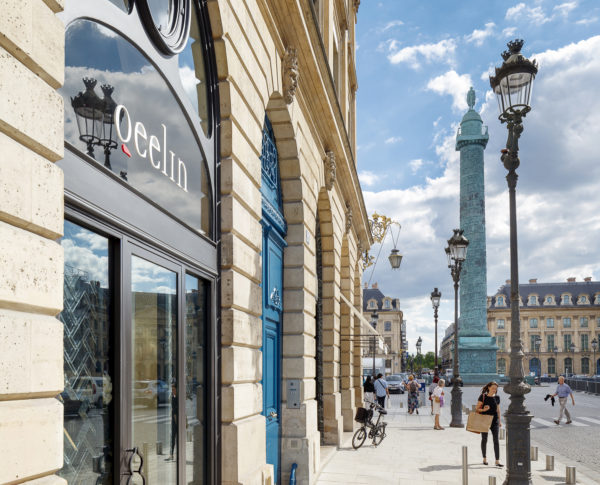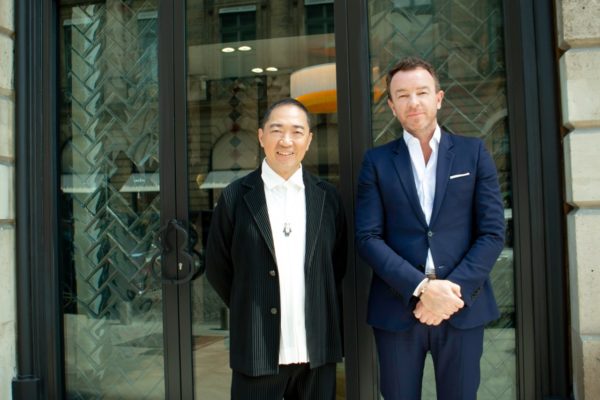“High-end Jewelry is Going from an Investment to a Means of Self-Expression”
What does China’s huge consumption of luxury goods mean for the high-end jewelry market? McKinsey’s 2019 China Luxury Report suggests Chinese consumers will account for as much as 65% of 2018-25 global growth in luxury goods, while a young wealthy demographic looking for a means of self-expression is fueling growth among jewelry brands. Daniel Zipser, Senior Partner with McKinsey in Shenzhen – a 19-year veteran of the consulting firm, with close to 15 years’ experience in China – shares his insights.
What are the main characteristics of the Chinese luxury market and its clients?
First of all, it’s a big market: Chinese consumers in 2019 has been spending more than 100 Billion Euros on luxury items in China and during their overseas travels. Future growth is expected to be driven by the rise of China’s upper-middle class, and in particular, disproportionately driven by the younger upper-middle class: the post-80s generation. It’s the growth of discretionary spending in this age group and their willingness to spend, say, 1,000 Euros on a ring for example, that I’m confident will drive growth in this sector in the mid- and long-term, despite the setbacks of the Coronavirus this year.
At this point, we have not revised our long-term estimates despite the quarantines posed by the pandemic – namely that we still think Chinese shoppers will be making up 65% of global growth in luxury goods between 2018-2025. This year, the share of China is expected to be particularly high as China’s state of public health and its economy are recovering in advance of the rest of the world and the Chinese consumer has a good level of confidence about spending. So we expect to see a recovery in spending in China, especially in the second half of this year and in 2021. But because of Covid-related travel constraints, we will see less money being spent on luxury outside of China.
How has the Chinese luxury jewelry market evolved over the past few years?
In the past and still often in lower-tier cities nowadays, jewelry has been thought of primarily as a precious metal or stones – gold and diamonds, for example – as an investment. This is changing with the younger generation, starting from higher-tier cities. Those consumers see jewelry as a means of self-expression, less fixated on the value of the gold, and more on the value of the brand. Therefore, they are attracted by foreign luxury jewelry brands.There’s an increased interest in the value of design and style of the product and what the brand means to the consumer – its underlying values. The customer has become more sophisticated.
This year, the long-term change will be digital engagement: it’s leap-frogged 18 months within a few weeks since the Covid pandemic. China is already the most digital country in the world, and luxury is no exception; however, in terms of e-commerce, jewelry purchases are not as prevalent as, say, beauty products. For jewelry, the Chinese customer uses digital platforms and social media to research their purchases, to become informed before going into a store to buy. Some 90% of purchases are still made in-store, but a lot of research goes on online before that. In addition, consumers also value omni-channel engagement and personalized experience in store, which makes their in-store experience unique and enjoyable.
What are the expectations of Chinese clientele regarding luxury jewelry Houses?
Brands are a very strong factor for the Chinese consumer, but there’s an even stronger focus on a kind of lifestyle that looks for things such as unique jewelry to express his or her personal lifestyle. The Chinese look at luxury as social capital, social sharing: a chance to show themselves. It’s not a matter of price; they want to stand out from others. Jewelry is becoming a part of that, moving out of the category of “special purchase” to the broader “luxury purchase.” And this Chinese consumer makes decisions fast: 60% of younger Chinese consumers make up their minds on a luxury purchase within a week.
What kind of relationship does the Chinese customer have with Chinese brands vs traditional Western luxury brands? And how is that evolving?
Chinese consumers increasingly prefer Chinese brands in many categories, but not yet when it comes to luxury. There is still a preference for Western brands. However, we see the Chinese generation born in the 1990s opening up to Chinese luxury brands with 11% of them even saying they’d prefer a Chinese luxury brand over a foreign brand. And as this is the generation that will be driving future growth in this sector, there may be changes for Chinese luxury brand players in the long-term.
What does it take for a jewelry brand to become successful in the Chinese market?
In the old days, a famous brand could open up a luxury flagship in Shanghai and that was enough. Today, it’s certainly not enough! While physical stores remain important, you need a strong brand story that’s relevant to the Chinese consumer. Your offer has to stand out, it has to be special, and it has to have a social-digital presentation element that links with the stores. It’s important to communicate with consumers online or through WeChat messages to advise them of new products and services and then to translate that online engagement – building on strong CRM systems – into bringing the customer into the store. This is even more important for lower-tier cities where store presence is more limited. So you keep the global status and you protect the brand, but you adapt your communications to the local market because basically, you have to win the hearts of the young Chinese consumer if you’re going to succeed.



